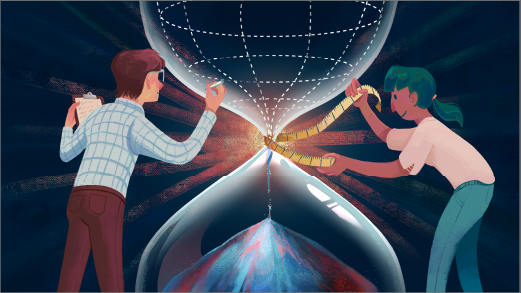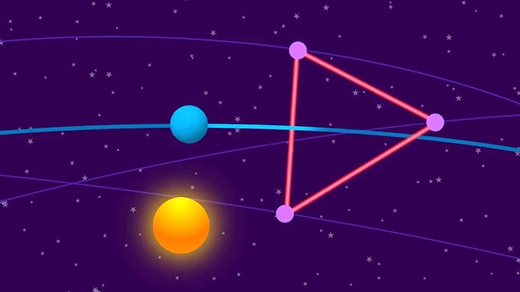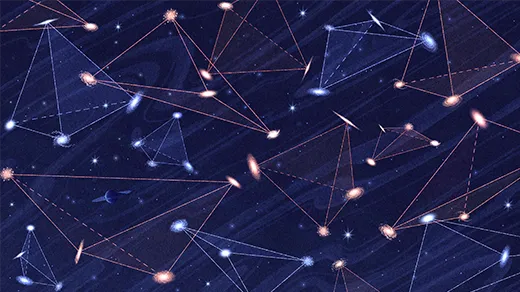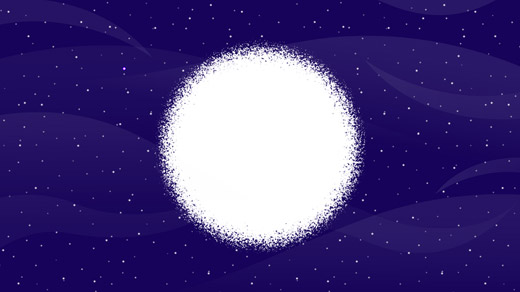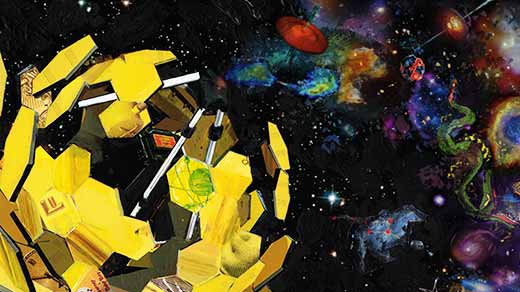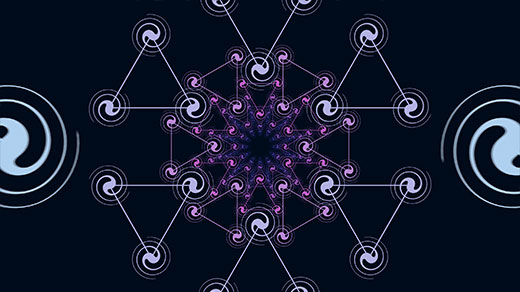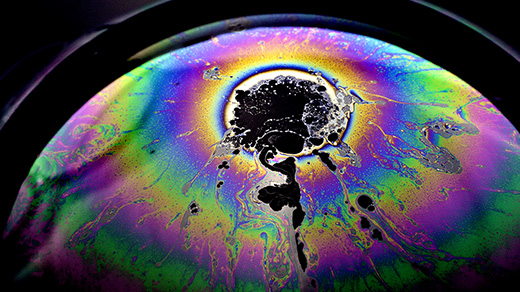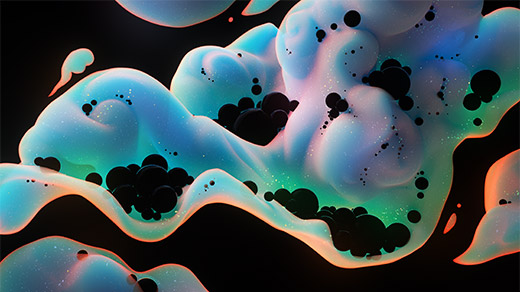What's up in
Inflation
Latest Articles
Mathematicians Attempt to Glimpse Past the Big Bang
By studying the geometry of model space-times, researchers offer alternative views of the universe’s first moments.
Hopes of Big Bang Discoveries Ride on a Future Spacecraft
Physicists and cosmologists will have a new probe of primordial processes when Europe launches the Laser Interferometer Space Antenna (LISA) next decade.
She Turns Fluids Into ‘Black Holes’ and ‘Inflating Universes’
By using fluids to model inaccessible realms of the cosmos, Silke Weinfurtner is “looking for a deeper truth beyond one system.” But what can such experiments teach us?
Asymmetry Detected in the Distribution of Galaxies
Two new studies suggest that certain tetrahedral arrangements of galaxies outnumber their mirror images, potentially reflecting details of the universe’s birth. But confirmation is needed.
How the Physics of Nothing Underlies Everything
The key to understanding the origin and fate of the universe may be a more complete understanding of the vacuum.
The Webb Space Telescope Will Rewrite Cosmic History. If It Works.
The James Webb Space Telescope has the potential to rewrite the history of the cosmos and reshape humanity’s position within it. But first, a lot of things have to work just right.
Laws of Logic Lead to New Restrictions on the Big Bang
Physicists are translating commonsense principles into strict mathematical constraints on how our universe must have behaved at the beginning of time.
Physicists Study How Universes Might Bubble Up and Collide
Since they can’t prod actual universes as they inflate and bump into each other in the hypothetical multiverse, physicists are studying digital and physical analogs of the process.
Physicists Argue That Black Holes From the Big Bang Could Be the Dark Matter
It was an old idea of Stephen Hawking’s: Unseen “primordial” black holes might be the hidden dark matter. A new series of studies has shown how the theory can work.
